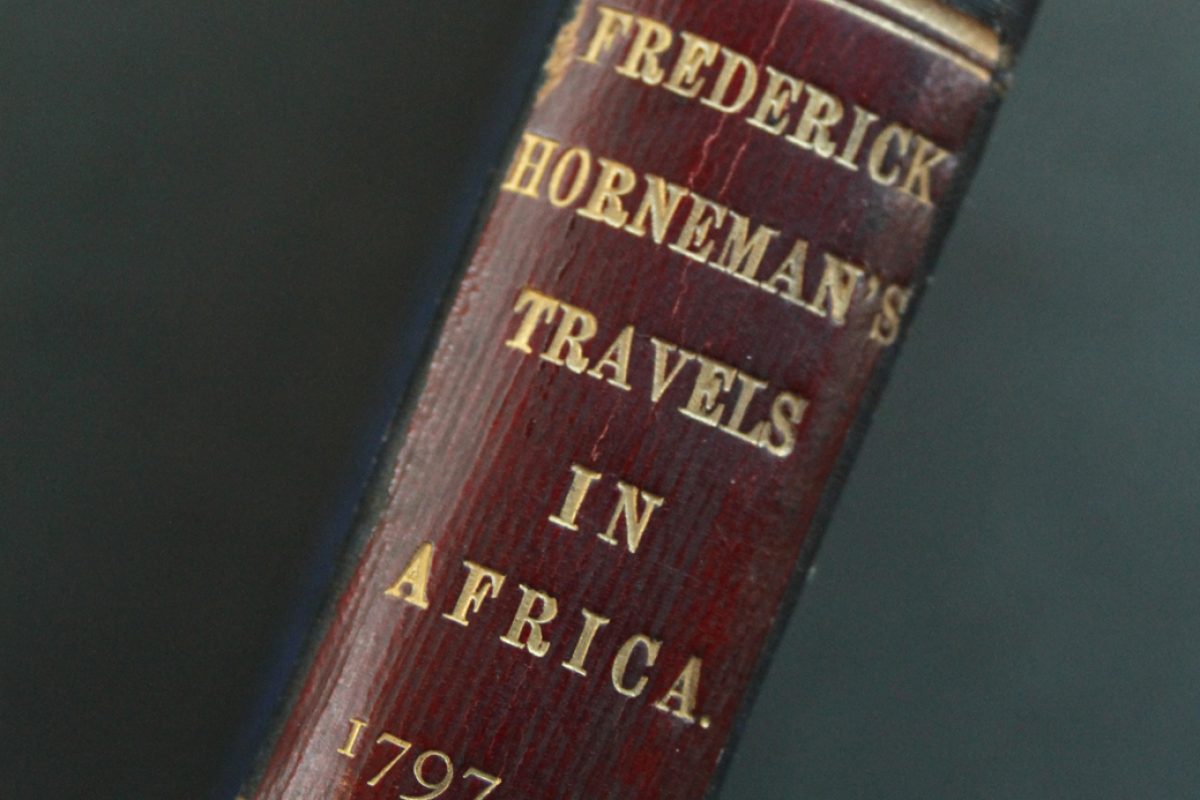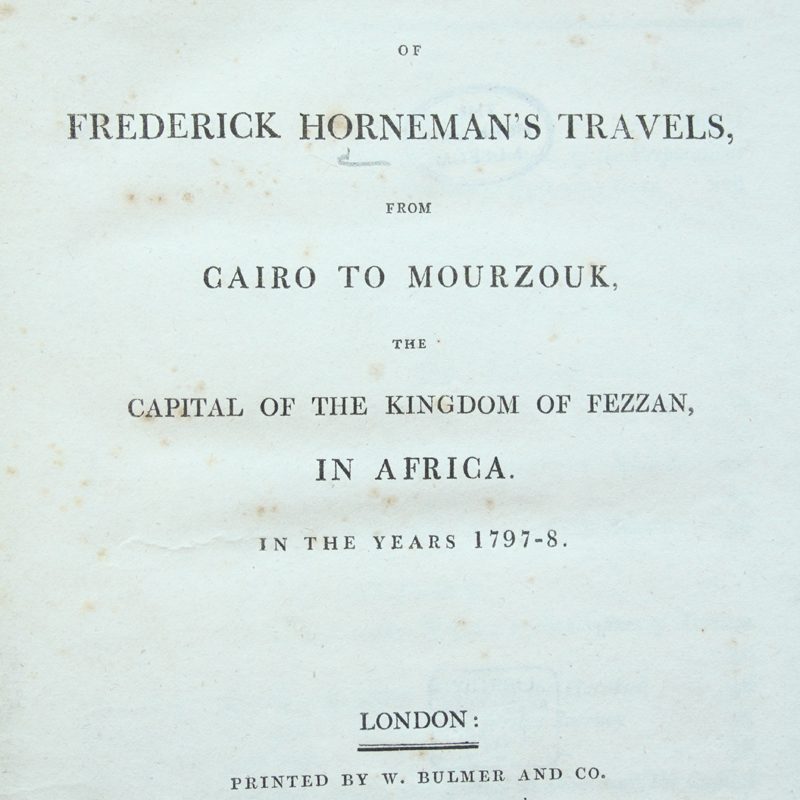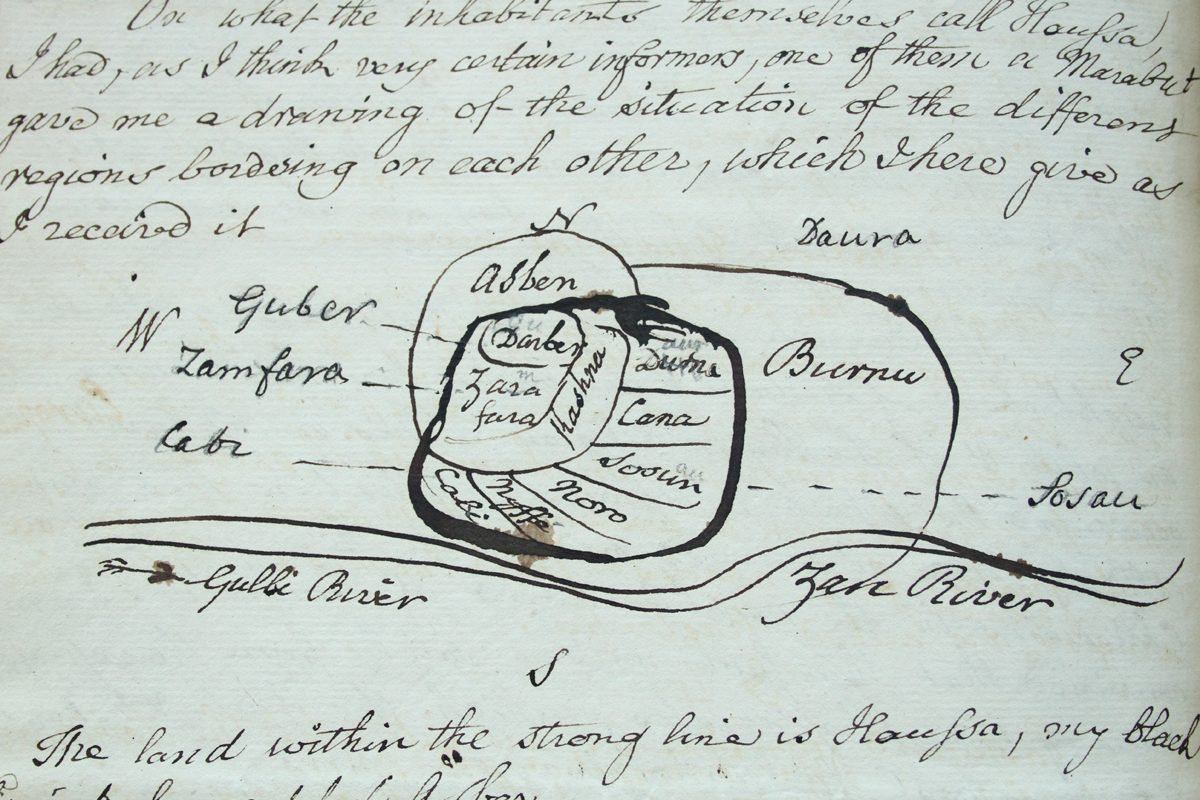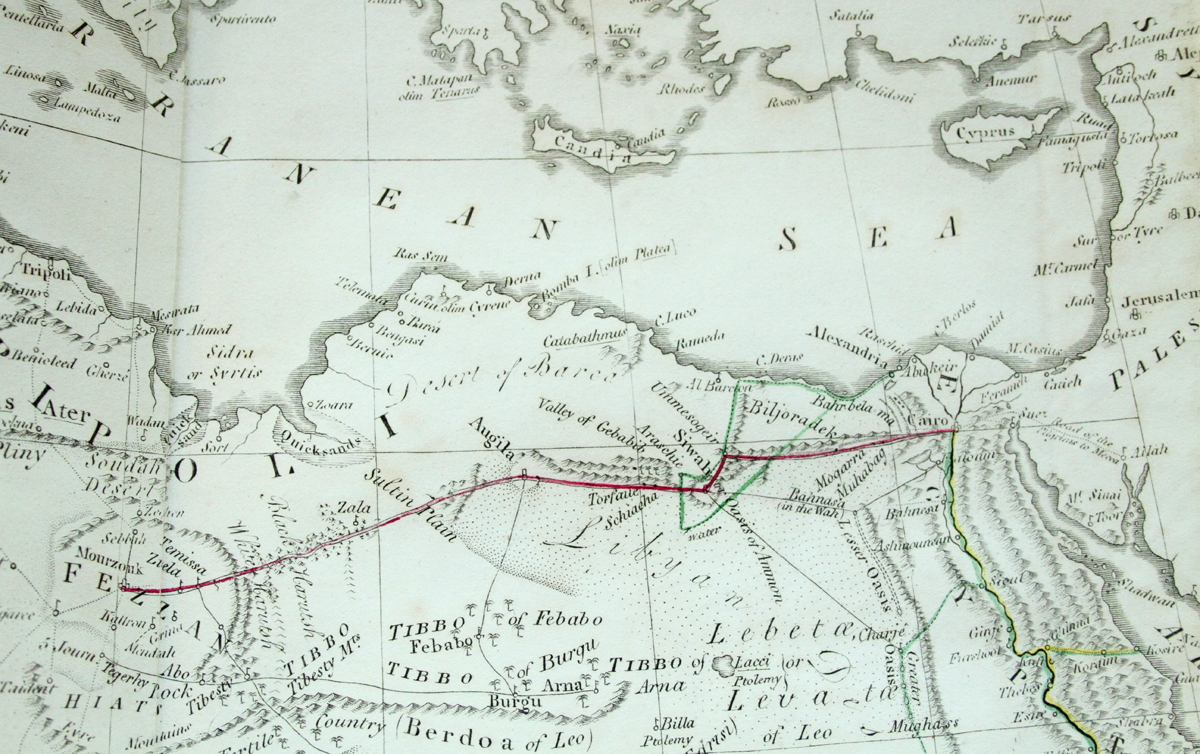‘Frederick Horneman’s Travels in Africa’ sounds like it might be an account of our founder’s adventures during which he gathered some of the museum’s collection. But on closer inspection this volume is quite a bit older than our own Frederick John Horniman, who was born in 1835. The book contains an account of the incredible travels of a German man with a name rather similar to that of our founder.
Friedrich Hornemann (his name is anglicised to ‘Frederick’ for our volume, while the last ‘n’ is removed in the printed version) spent years exploring parts of Africa which no Europeans had travelled to in around 100 years.
His ‘Travels’ contains both handwritten entries and printed accounts translated from the original German for the years 1797-8, during which he travelled the ‘Interior of Africa’, setting out from Cairo in Egypt. He was just 24 at the time.
Hornemann was perhaps a good deal more of an intrepid traveller than our founder, who obtained most of his collection by buying it from other explorers, and only travelled widely much later in life.
It is tempting to imagine our own Frederick Horniman reading these accounts, perhaps developing a desire to do some of his own travelling in and collecting from ‘undiscovered’ lands.
Hornemann’s account is punctuated by his hand drawn maps of the regions, while large fold out charts by Major James Rennel are added to this volume to show his whole journey.
Also included are a number of letters and minute documents detailing the preparations needed to arrange for his trip, which was undertaken on behalf of the London-based African Association (explaining why his journal is written in English).
They provide a brilliant insight into 18th century travel, detailing the expenses expected to occur (including a compass, telescope and sextant), languages Hornemann would learn in advance and his need to become familiar with the ‘manner and customes of all such stangers’.
We’re unsure what happened to this world explorer. It seems he kept travelling for the rest of his life, and in 1803 was recorded as being in Tripoli. It is thought that he died in 1819, somewhere in or near Nigeria.
No other European explorer followed his route again until 1910.







